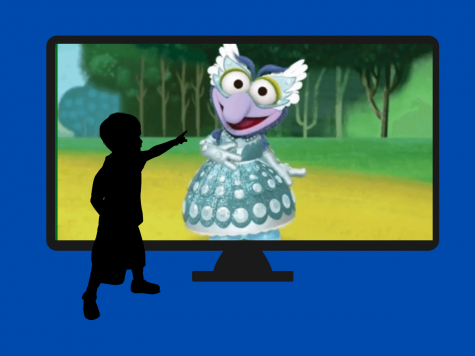A girl left clinging to her precious iPhone syncs in a sea of iPads
Students work on iPads during lunch periods.
As most students have experienced, iPads have become a big part of how we learn at BG today. With the roll out of iPad pilots for all sophomore and senior level courses, a small chunk of students are left feeling unplugged from this new tech community.
I, unfortunately, am one of those special few. A girl left clinging to her precious iPhone in a sea of iPads, wondering what it must be like to have the ability to iMessage in class without any speculations of wrongdoing or being able type and “take notes” (aka beat my high score on Sled Racer).
According to Innovative Technology Facilitator Jeffrey Vlk, about 85% of students have received an iPad from BG, resulting in 15% who don’t.
However, when surrounded by iPads, it really can feel like you are back in grade school and are one of the last ones picked for kickball.
This feeling of being left out is the true issue.
When it comes down to it, is it really that big of a deal that we don’t have our very own iPad or are we just annoyed because we do not get to be one of the majority?
A pressing issue with iPads is how people will use any excuse to complain about anything that is school–related. Most people that complain about not having recieved iPad’s are better off not having them for the same reasons that adults expect: distractions.
Our world offers a plethora of technological opportunities. These opportunities offer advancements in medicine, engineering and in BG’s context, technological oppourtunities that lead the way to innovative educational techniques. Although people might complain about not having iPads, they can’t dismiss the fact that they present a new way for teachers and students alike to communicate.
Some students have experienced classes where those who have iPads are allowed to utilize them. I personally have, but it’s important to remember that the teachers are new to this, too.
They have been told to embrace technology and they do not have control over which students get iPads or not.
Teachers should adapt their curriculum to be both availabe for iPad and non–iPad students.
This way, they will not have to worry about a student complaining to tech people that they need an iPad, saving the teacher, students and tech faculty time.
More radically, teachers with classes that don’t require iPads should not be using any iPad neccessary technology whatsoever.
It seems pointless to cause more fustration onto the student and oneself.
“Teachers that don’t have full iPad classrooms should be handing out paper copies of things,” Vlk said.
I am sure that if most teachers had the opportunity they would hand out an iPad to each student in order to make learning more accessible. After all, that is the goal isn’t it?
It’s not like teachers are purposefully segregating students. Students just need to be a little more patient with the system.
Eventually, all students will end up with an iPad, it’s inevitable. In the meantime, I’ve come up with some ways to cope with the feelings of exclusion.
Students should try out opening up a notebook, and dare I say– take handwritten notes.
While your friends are playing Fun Run against each other, take a look around and find your iPad–less neighbor. Interact with them.
Get to know the person next to you. You never know if you could be meeting the best friend of your life if you don’t try.
Technology is meant to be enjoyed, but should also used in moderation. Do not be blinded by the outside world by hanging onto technology.
Everybody is capable of surviving without iPads and the alternatives for non–iPad owning students are endless. Whether they be reading a book, interacting with strangers or even paying attention in class.
Let’s not fit into the stereotype that all teenagers care about is technology.
Let’s not transcend into a world of ignorance.
Let’s also learn to be adaptive.





